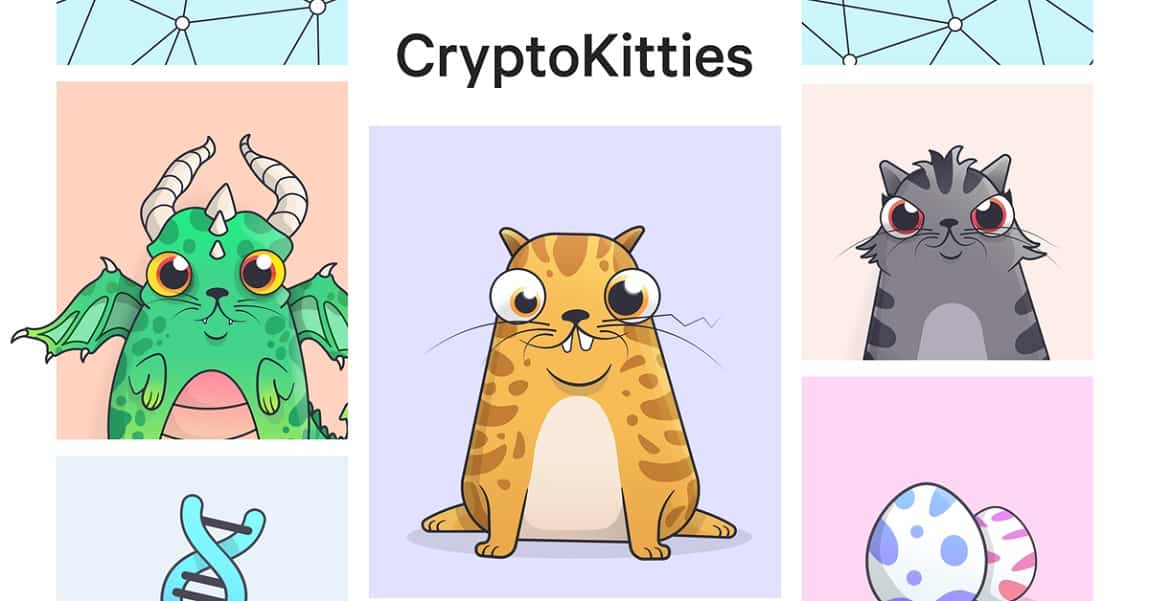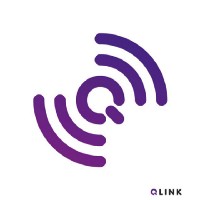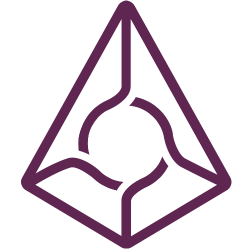Dapps, DAOs, decentralized networks. If you’re reading this, chances are you’re probably already in the crypto space and have at least a fundamental understanding of the awesome potential of blockchain technology. However, most people in the world don’t have a clue about the potential disruptive power of blockchain.
To get these people in the game, decentralized applications (dapps) built on a blockchain are likely our best bet. A dapp can be a blockchain-based upgrade of something we’re already familiar with, or an application that gives us something completely new based on the characteristics of blockchain technology.
In this article, we explain what dapps essentially are, how they have the potential to catapult blockchain into the collective consciousness, and highlight several high potential dapp projects.
What is a Dapp?
A dapp is decentralized application that runs on a blockchain platform such as Ethereum, Qtum or NEO. These platforms are the foundation of the blockchain, providing the technology, protocols and a computer network.
Essentially, blockchain platforms are one huge distributed computer. Similar to traditional computers, these distributed computers need applications built on top of them to make them valuable for its users, which is done through dapps. Thus, dapps are applications that create value for the blockchains they run on.
The software which allows a dapp to function must be open source, so that anyone can see what’s going on under the hood. Because a dapp is open source and decentralized, there is no central party that can implement changes to the dapp on their own.
Any changes are usually conducted after the network of a dapp has agreed that an improvement proposal can go through. Thus, changes to a dapp’s software can only happen once its users have come to a consensus. To reach consensus, a dapp employs its own consensus algorithm, such as Proof-of-Work, Proof-of-Stake or Delegated Proof-of-Stake.
For a consensus algorithm to work, a native token for a dapp is essential. This token is used to incentivize network members to participate in the operations of the dapp and advance the quality of the dapp.
The most widely accepted method is rewarding dapp nodes for verifying transactions and securing the network. They are rewarded in the form of newly generated tokens, which are awarded based on the consensus algorithm.
Click here for a brilliant line of thought on networks and rewards systems.
When a dapp is up and running, it has its own cryptographically secured ledger which is public and distributed amongst the users of the network. All transactions on the dapp can thus be observed and agreed upon by the network.
Why Do Dapps Matter? The Quest for the Killer (D)app
Dapps are likely the application of blockchain technology that will push the tech into mainstream adoption. Blockchains themselves are complex and not very user-friendly, something that dapps can completely change. Dapps are basically simplified versions of blockchains that focus on a specific use case. This allows them to leverage the advantages of blockchain technology whilst also being able to provide an easy-to-use product or service.
Blockchain technology has already moved towards mainstream attention during the last rally, but adoption is still severely lacking. The reason for this is simple: thus far there hasn’t been a decentralized application that is as user-friendly and beautifully designed as current software while leveraging the benefits of blockchain technology.
Steemit, for example, is an amazing concept but most people don’t want put in the additional effort to use it by buying Steem, understanding the interplay between Steem, Steem Power and Steem dollars, and having to find likeable content themselves.
A “killer app” is a term used in tech to describe an application of a new technology that catapults it into the mainstream. It introduces the underlying technology to the masses by creating a product or service that is much better than anything comparable in existence.
Examples of killer apps are Space Invaders for arcade gaming, Microsoft Excel for computers and email for the internet.
Currently, such a killer app is still absent for blockchain technology. It can be argued that Bitcoin is, or still could become, the killer app of blockchain although it has been around for nearly 10 years already and the community still hasn’t quite figured out whether Bitcoin is a currency, a store of value, or both.
The true blockchain killer app will likely take the world by storm in a way comparable to the rise of Facebook. For this, we need an incredibly strong network effect, thus it should be a dapp that becomes more valuable and useful when more people use it.
Before a dapp can become a killer (d)app, there is still one bottleneck for dapps: the value of their native crypto tokens for the masses.
Since tokens are essential for dapps to be functional, a meaningful use of them for the masses is vital. Converting cryptocurrencies back to fiat can be a tedious process and will scare away the average internet user.
One solution is that value gained through dapps stays in crypto. But how will people then be able to use their newly acquired digital wealth to buy champagne and plane tickets?
This is a chicken-and-egg situation that still has to be solved. If the supermarket won’t accept crypto, it’s kind of useless for the average user. If hardly anybody owns crypto, why accept crypto for groceries?
This problem has to be solved before cryptocurrencies can go mainstream because people will continue seeing crypto as magic internet money if they aren’t able to spend it on things they want and need.
6 Promising Dapps in Today’s Crypto Market
Crypto Kitties 
This Ethereum-based application is the most successful dapp thus far. It has received quite a bit of mainstream media attention, flooded the Ethereum network, and recently managed to attract a $12 million investment.
While this dapp could be called a killer app for Ethereum, it likely isn’t the killer app for blockchain technology. It’s hard to believe that the non-crypto world would pay hundreds or thousands of dollars for digital cats, no matter how cute and immutable they are.
Crypto Kitties, however, perfectly demonstrates how a dapp would reach mass adoption, namely by going viral through creating something valuable and using the strengths of blockchain technology: limited supply, self-storage, open marketplace, immutability and identifiability of the kitties.
Power Ledger 
This Ethereum-based dapp is creating a peer-to-peer marketplace for renewable energy. The Power Ledger platform will allow people to trade surplus energy to those in need of some extra power, without either having to go through the central, inefficient incumbents in energy supply.
This use case of blockchain technology has often been highlighted by multinationals and mainstream media, and Power Ledger has a leading position in disrupting the energy sector. Even Elon Musk seems to be interested in this dapp, making the platform a serious candidate for future killer app status.
Request Network 
Request Network is a decentralized platform that enables payment requests. It’s often referred to as a direct competitor of PayPal because it aims to offer similar services and features but on the blockchain. By leveraging blockchain technology, this platform can do it faster, cheaper and more securely.
Besides the basic payment request options, Request Network aims to provide additional services such as automated invoices and payments, accounting and auditing in both crypto and fiat. PayPal has become a household name over the last decade, but definitely has its limitations. Request Network aims to challenge the online payment hegemony of PayPal and excellently leverages the advantages of blockchain, which could allow it to surpass the constraints of PayPal. A scalable and user-friendly platform could make Request a serious competitor and lead the way for mainstream adoption of blockchain.
Qlink 
Qlink is an application built on the NEO platform that aims to develop the world’s first decentralized mobile network. The team is creating an infrastructure through which the Qlink community can become a decentralized telecom organization.
The first step is to make it possible for users to share their Wi-Fi with other community members through creating hotspots. Providers of Wi-FI get rewarded through micropayments in the Qlink native token, QLC.
There is no existing comparable business to Qlink and most people using Wi-Fi have more capacity than they’re actually using. Qlink’s platform could create a whole new marketplace that makes Wi-Fi more accessible and far more efficient than is currently possible. If their idea catches on, the Qlink platform could explode.
Augur 
Another Ethereum-based dapp, Augur aims to create a decentralized prediction platform. The team firmly believes in the wisdom of the crowd and wants to use the knowledge and beliefs of their members to create valuable prediction models.
Users can bet on the likelihood of future events (Will Trump be impeached? Will North-Korea win the World Cup? Will Crocs ever become cool?) and if they’re right, they’ll get rewarded with tokens. This dynamic will generate increasingly valuable insights on future events when more people start betting on them.
At first glimpse, Augur provides a fun way to try and make money with your predictions. As soon as this idea catches on, it could spread like wildfire since gambling and betting is a huge industry. Once it catches on, the prediction models could become highly valuable, which could lead to a positive reinforcement cycle for the Augur platform.
Spankchain 
Historically, the adult entertainment industry has always been an early adopter of new technologies. Middlemen are a severe issue in this industry, something that blockchain can remove. Having such sensitive purchases on your credit card statements never fared well with most, and the use of anonymous cryptocurrencies can change this.
The Spankchain token (SPANK) is precisely this and makes micropayments and anonymity possible, features that can greatly benefit the most dominant online industry (yes, sex sells indeed). Furthermore,Spankchain is working on a decentralized platform for adult entertainment, which can create a more fair and distributed ecosystem for an industry that has always been quite shady and prone to questionable distributions of power and the use of this power.
Waiting for the Killer Dapp
The projects above are great examples of what dapps are and what they can do. They reap the benefits of blockchain technology by creating new revenue models for users and cutting out middlemen, and are creating platforms that focus on user experience and interface.
They also demonstrate the key requirements of a dapp: decentralization, consensus models, open-source systems, and the presence of a native token to reward productive and desired behavior.
2018 could very well be the Year of the Dapp, and maybe we’ll even see the first kill (d)app of blockchain technology. Besides this development being great for blockchain technology as a whole, such a killer app could also give rise to another round of cryptocurrency mania, which we’re all anxiously waiting for.
If you don’t want to miss out on the next big dapp, we recommend starting to use them and establishing whether your uncle who still wonders where all the video stores went would understand them. The dapp that can achieve that surely help catapult blockchain into the mainstream and our everyday lives.
Related: Everything You Need to Know About Cryptocurrency Airdrops

